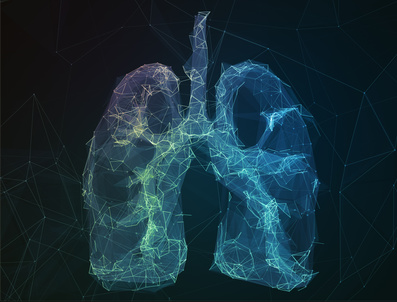COPD
In order to best serve patients, acupuncturists have to look at both the Western Medical model and the Eastern models. If a patient is diagnosed with an illness in Conventional Medicine an acupuncturist must be able to translate that diagnosis into a Chinese Medical understanding. Otherwise, the proper course of action may not be taken.
COPD is one of many diseases that plague families and loved ones the world over. Although smoking is being replaced by vaporizers or eliminated completely, long-term smokers may be faced with this frightening diagnosis. Here we will look at COPD from a Western and Eastern viewpoint, and explain how acupuncture can help.
COPD is a combination of long-standing emphysema and chronic bronchitis. Smoking is the main cause of COPD because it leads to emphysema. In Chinese Medicine, we look at nature and the environment for our diagnosis. Things such as heat and dampness can be pathogenic factors where qi is concerned. COPD in Chinese Medicine looks at how smoking inevitably adds heat to the lungs. All that heat can lead to Lung Yin Deficiency. Accumulation of phlegm with this heat causes the primary components of COPD. In pretty much all cases, smoking is the main culprit. However, grief and sadness can also effect the Lungs in a negative way if chronic.
So, what exactly do heat and dampness look like? In COPD, heat comes from inflammation and irritation of the lungs. After long-term smoking, cells in the lungs create a sticky mucous (dampness) to protect themselves and remove toxins, however, the mucus cannot be easily removed and that leads to even more inflammation and infections. Understanding this mechanism, acupuncturist choose points on the body that help to clear heat and transform excess dampness and heat, especially in the lungs. Although COPD is irreversible, acupuncture is phenomenal at lessening the symptoms associated with it, and helping to maintain a stable level of lung health.
For more in-depth information, please refer to the sources below.
Stephenson, C. 2011, Churchill Livingston. The complementary Therapist’s Guide to
Conventional Medicine. 224; 236-237.
(1) Maciocia, G. 2012. Churchill Livingston. The Foundations of Chinese Medicine: a
comprehensive text for acupuncturists and herbalists. 545-548; 556-565.
(2) Maciocia, G. 2012. Churchill Livingston. The Practice of Chinese Medicine: the
treatment of diseases with acupuncture and Chinese herbs. 143; 227.
Choi, T.Y., Jun, J.H., Choi, J.Y., Kim, J.I., Lee, M.S., Ernst, E. 2014; 4(4). BMJ Publishing Group Ltd.
Acupuncture for the treatment of chronic obstructive pulmonary disease: a protocol of a systematic review. DOI: 10.1136/bmjopen-2013-004590.

